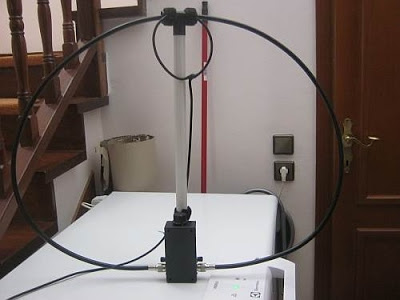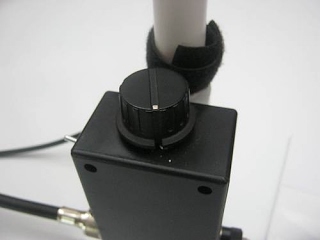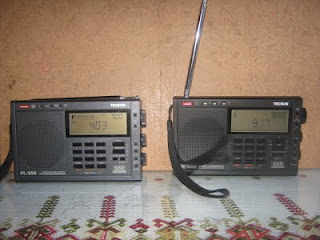PL380 is one of my
latest catches and comes two months before I bought the De17 PL 380 replaces
my older PL 200 which is used mainly as clock radio instead of a DX toy !
As
with my all reports this will be a comparative review
between 380 and several oter radios namely DE1102
and DE17
Design : its design is
superb .The model I have , has a black colour and buttons are
black though very small. Frequency and volume controls are both
digital
Som e photos of it with some info
keyboard is a rather
thumbs down feature . Its buttons are quite stff
and require some pressure to be activated .
Some buttons have
second utility . as for example the button 2 can be used also for
changing the 12 hour clock to 24 hour . M can be used also for battery
charging . Button 1 can be used for setting between 68-108 and 87.5-
108 number 3 can be used between American (10 khz )and European 9 kHz
standard . FM /MW/LW and SWbuttons can be used also for ATS ie auto
tune and store
Light snooze lock keys time and alarm . i only use the local function when i ma not using the radio
Volume and tuning control. Both are digital ie with steps . Volume has 30 steps.
Earphone and power supply using D connector !The same is with other PL models
AM reception :
MW reception and sensitivity : MW has better sensitivity
than the Degen 1102 as measured by parallel listening. Due to self AVC
(auto volume control ) inner circuitry's noise is highly
amplified , though is quite softer and lower than the DE17's
harsh noise and is heard higher than
the 1102’s inner noise . It has the sense of the so called ‘pink’
noise . Although i don’t know the circuitry I think it could be possibly
still lowered more either by replacing the fist preamplifier with HEMT
technology (or is it Hemt??) or by using external MW loop antenna
such as An200 or my ‘basketena’ With little experiment , 380 did nt
shown any real enhancement except for the signal indications
!
MW suppression : If there are nearby stations with strong signals ,
part of the MW band will be suppressed in terms of sensitivity or dynamic
range, ie becomes less sensitive . As for example there is
the University’s station on 1431 KHz of ca 500 W of power (not EIRP )
produces a signal of 78 dbμ in a distance of ca 1 km . This makes the radio increase the threshold to ca
40 db from the nominal of 25 db in the remain band .
This doesn’t happen with DE17 or DE 1126. this is
another thumbs down for this radio .
Frequency extension : PL380 offers
extended MW (531- 1710 kHz )we as well as extended Fm
band (68-108 MHz ) This is very good for listening to Greek pirates on MW
and the Bulgarian TV audio on ………. Hz Please read below for a memory funny
Self hets : There
are some
hets esp in the MW band I found some on 729 1405 1603 635
Long waves : I have not
found any signals in this band
AM filtering : PL 380 is
programmed with filters of 6 4 3 2 and 1 kHz . I found that 6
kHz fits only for strong and free of QRM signals (or good for MW )
4 kHZ fits for more cases as well as 3 kHz , but 2and 1 only
for difficult conditions. Could prefer if BW was stored in
memory .....
Fading pattern : due to
soft mute , fading is heard as more
intense than 1102 . co channel fading is
heard faster than the nominal
Accurate S/N ratio can be shown only if proper filtering
– clear from QRM and hets - is used . as for example if a signal
has QRM or radio’s self carriers s/N readout is shown as
zero . As filtering is lowered S/N gets the correct readout
I m still wondering if
these filters are really the correct bandwidth. The 6 kHz filter can receive signals of +- 5
khz from the main freq as it was on freq !!
SW reception : the same applies
to Sw with the MW reception
in regards of sensitivity and selectivity .
S meter : this is the reason i
bought the radio. Rather bizarre operation as the S level depends
on location height above ground and the band of reception if measured on
vacant frequencies.
Please look on thi
page for a better definition
There are two indications
: S and S/N standing for signal and signal to noise
ratio
There were many cases
the readout sticks to one point or number errors occur . IN
order to be 'reset' you have to detach antenna or otr put the radio to
ground so that the signal level drops to 'zero' (this is
meant for SW bands )
Soft mute errors!!! Yes
that can happen ! especially if signal is relatively low or the
processor thinks that signal drops to soft mute levels . Using the
technique above can restore radio's operation
ON some cases it
can overload. This can be following the reset procedure as above and only
in MY Olymp (thresholds there are at last 35db in vacant freqs )
FM reception :
PL380 seems again
more sensitive than 1102. Audio is 'clearer' than 1102 ie less bassy
and more trebly (parallel listening with two Carefour ear bud sets
) . Parallel listening with DE17 and PL360 shown
lower inner noise than other models . Selectivity is very high so
that poor signals in between high power signals can be also received.
Same as with 1126 17 and 360 !
Could be also nice if a
narrower filter is used for more extreme FM DXing
Fm band can
be extended from 88-108 to 68-108 using the … button while
radio is off
Important notice :
as with most DSP radios PL380 requires high S/N rate in
order to decode properly stereo signals .The lowest level for Fm decoding
is 10 db S/N
Audio is
low for
low signals (ie S/N levels lower than 10 db due to soft mute ) and
require several volume steps in order to be heard OK External
antenna can greatly help low signals without distorting band
reception as tested with short wires
A memory funny :
if you activate
extended frequency bands as eg 68-108 instead of 88-108 and
memorize some freqs , and then revert back to the standard band (88-108)
, the out band memories are hidden from the mem scan !
Reactivating the full band the out f band memories are
once again activated !
Same applies to MW
band .
Audio
:
PLL 380 has
30 digital volume steps. Best level with earphones is 5
to 8 This level is very low with
the built in speaker though can be heard with the
same headphone level if your ear touches the speaker !
In this range (5-8)
volume steps have big skips. The least volume is at 9 -10 to
be hjard in silent places .About 20 is required
Earphones : this radio
continues the tradition of most Tecsun radios with very low speaker
output and high earphone audio. Earphone audio level is
the same with ear touched to the speaker!
Battery operation : Radio has really
very low battery consumption . With ca 1 hour per day , from
the date pf receiving it (Feb 13 ) I charged the battery on mid
August ! ‘Blinking battery level’ can be fully drained in ca 5 hours
Batteries : 3
batteries are
included brand Enelong (surely Chinese )of 2100 mAh
Memories : the radio has
550 memories separated by bands .
ETM : A very nice choice for
PL380 for collecting all freqs in a given band . though
not very fast in scanning it collected nearly all the signals in the very
congested FM band !
ATS : it is te same as
with ETM , but with the diference that freqs are steored into
regular memories . Any previous memories are deleted
Therefore prefer to keep my memories intact and use ETM
for freq scanning. ETM memories can also be memorized.
Verdict 8/10
radio
is superb in terms of functionality performance etc . It drawbacks are
the loss in sensitivity in case of string local signals the stiff keyboard and
sometimes the little crazy reception (more esp in S unit terms )
that easily can re restored
MY wishes:
- suppression to be
corrected
- external antenna connector as with 390
- line out or
better include a flash memory for recording
add on : (update )
usage
wit external antennas. as far as i tested this radio is very prone to
overloads or even to faulty signal reading. It has been tested both
internally and externally. hat means it requires immediate separation
from the antenna and again connect or even be induced with the external
antenna in order first to read correctly as well as play /listen
correctly
(that s very bad to me )
New info
Here are photos of the audio spectrum in SW as heard in a DRM signal and a FM bandwith recording
ALL PICS BELOW AS FROM THE GOO SITES PAGE AS FAR AS THEY ARE NOT REMOVED
6 kHz bandwidth
|
4 kHz bandwidth
|
3kHz bandwidth
|
2 kHz bandwidth
|
1kHz bandwidth
|
FM bandwidth in with local noise
|




































